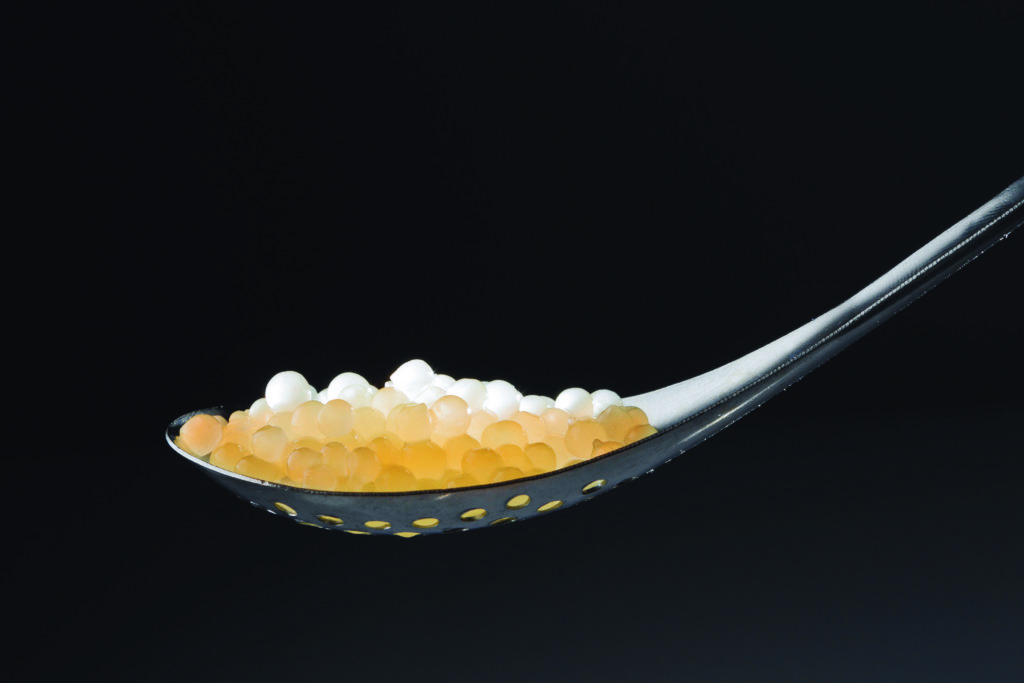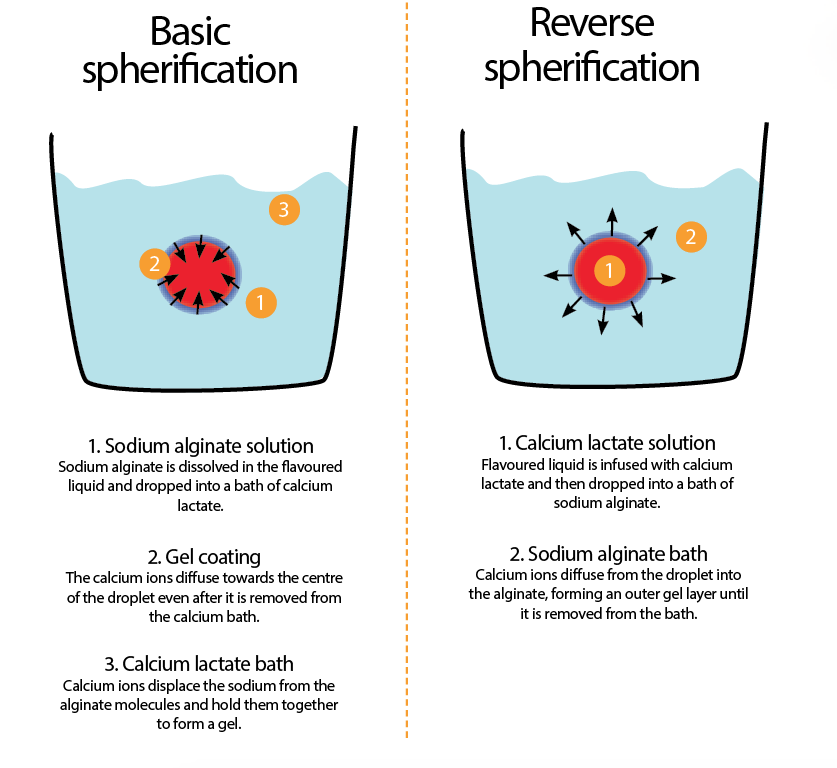The science behind bubble tea
by Scott Dutfield · 05/08/2019

Spherification puts the bubble in bubble tea
To add an explosion of flavour to a dish or cocktail, chefs can use clever chemistry to create spheres of flavoured liquid. The liquid is contained inside a thin gel membrane that when put under slight pressure in your mouth, bursts open to reveal the delicious contents within.
The spheres can be created using one of two spherification techniques. Basic spherification has the benefit of creating an extremely thin gel membrane that is almost imperceptible in your mouth, but this will not work if the liquid has a high acidity. The gel also keeps forming after the liquid is removed from the bath, so the sphere must be served immediately, before it becomes a solid gel ball.
Reverse spherification is best used for liquids with a high calcium or alcohol content, and although it creates a thicker membrane, the finished sphere is longer lasting as the gel stops forming as soon as it is removed from the bath.
This article was originally published in How It Works issue 101 written by Jo Stass
For more science and technology articles, pick up the latest copy of How It Works from all good retailers or from our website now. If you have a tablet or smartphone, you can also download the digital version onto your iOS or Android device. To make sure you never miss an issue of How It Works magazine, subscribe today!





